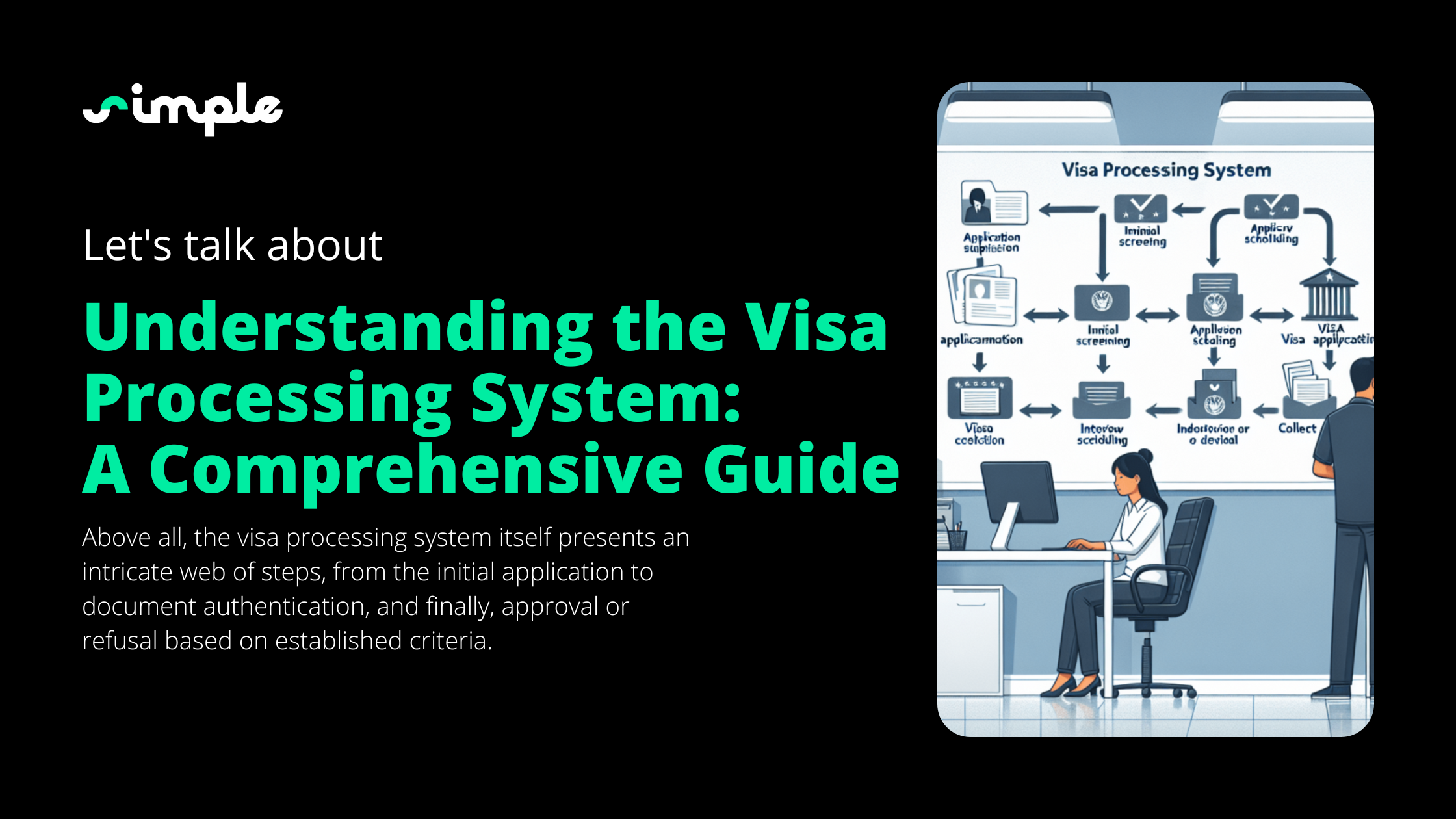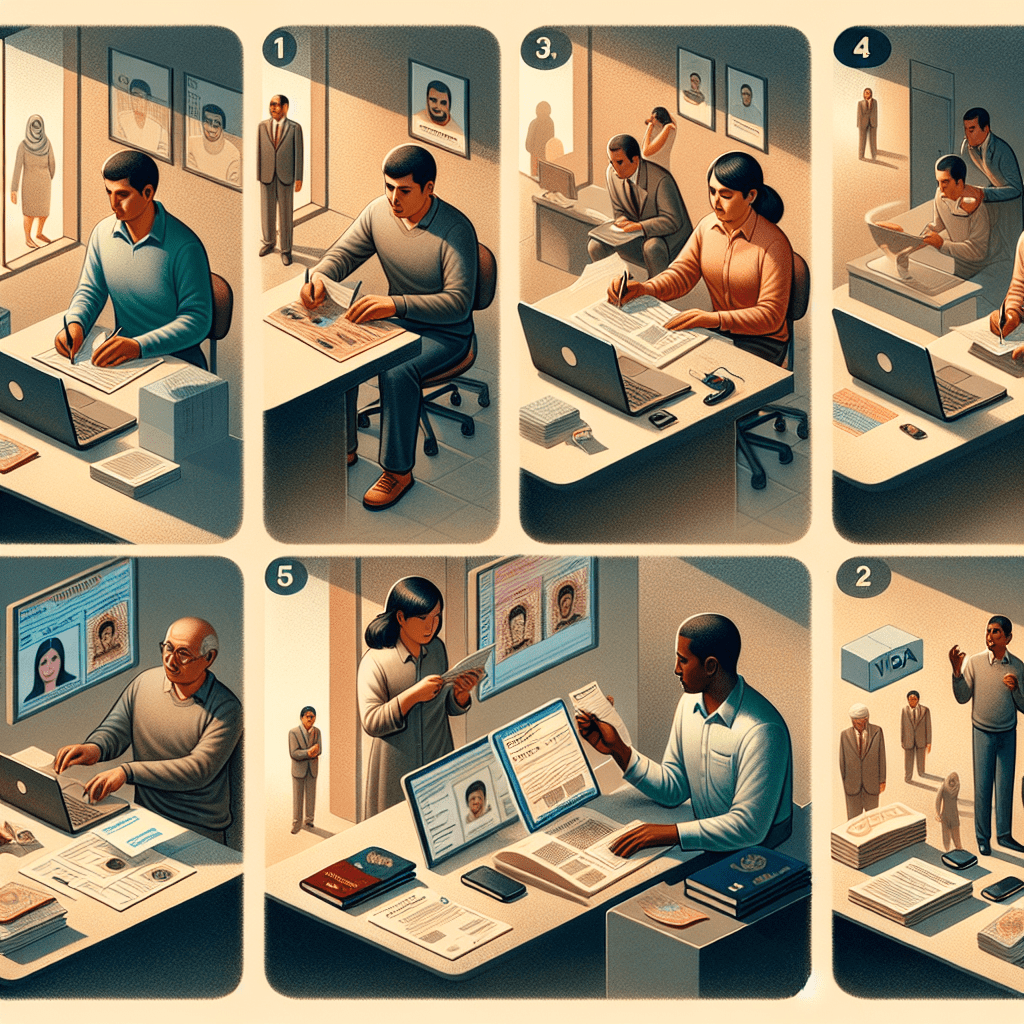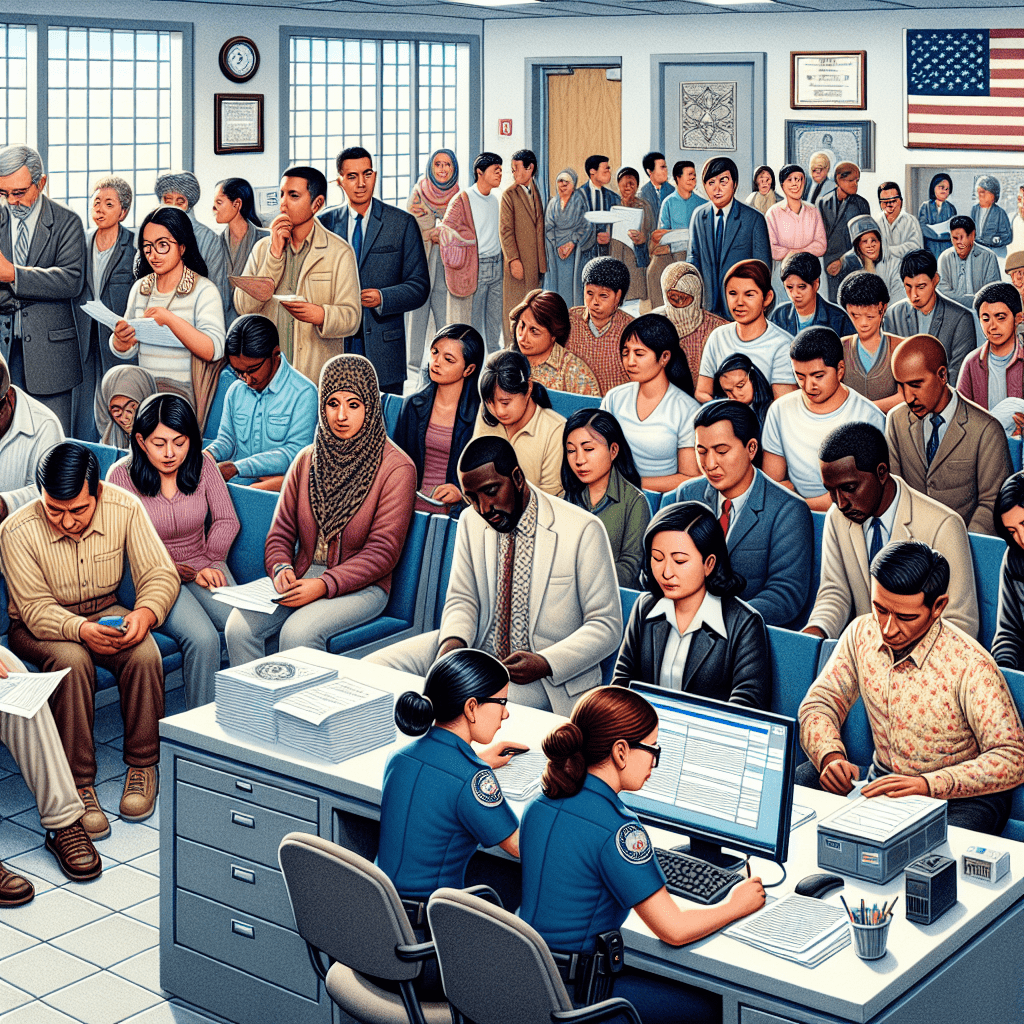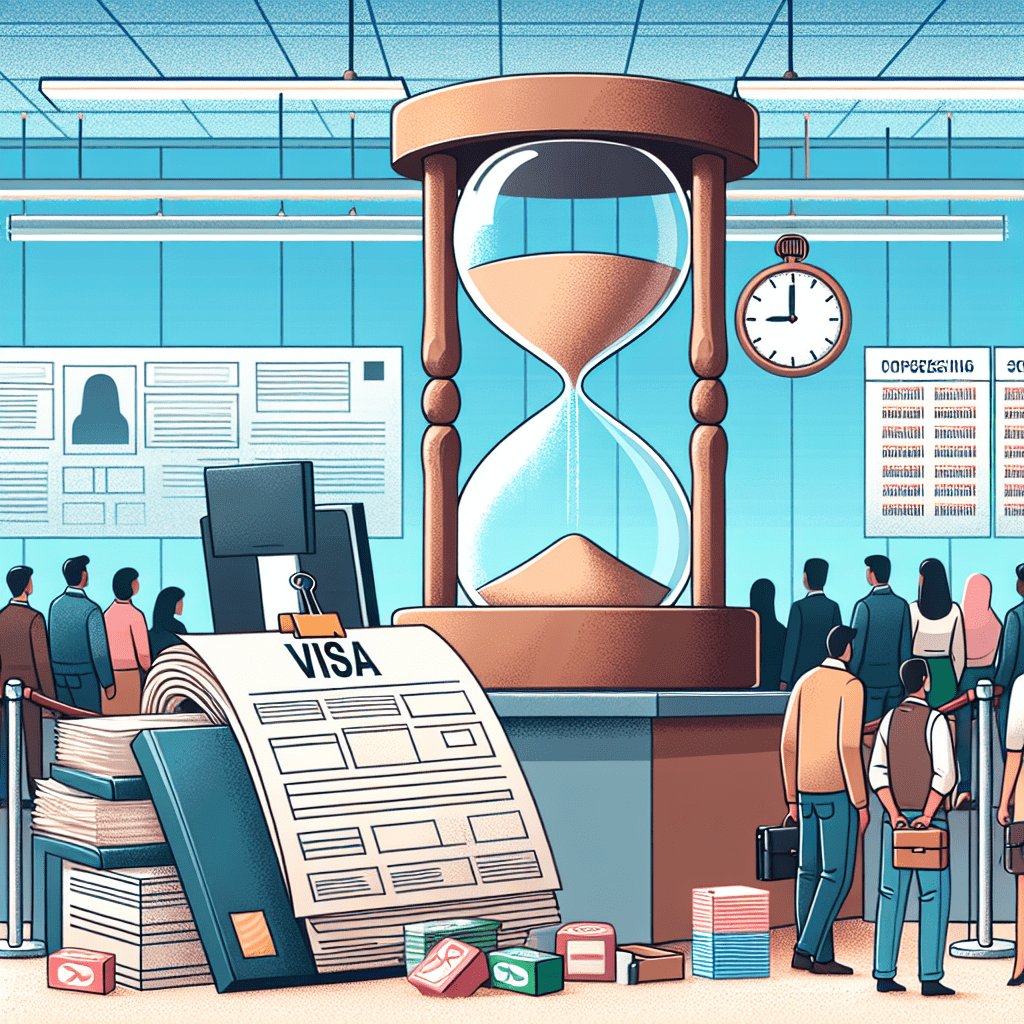Understanding the Visa Processing System: A 100% Comprehensive Guide

At the heart of the matter are different visa types. These categories, each tailored to match varying travel purposes – be it for work, studying, or tourism, have specific requirements and distinct protocols. By deciphering these categories such as the student visa rules, work authorization processing, or tourist visa application, one can better prepare for the visa submission stage, ensuring that necessary documentation aligns with the intended visa type.
Above all, the visa processing system itself presents an intricate web of steps, from the initial application to document authentication, and finally, approval or refusal based on established criteria. By grasping the breadth and depth of this process, one saves not only time but also resources, ultimately paving a seamless path for their international journey. Hence, this guide presents an in-depth look at the integral elements of the visa processing protocol to aid prospective applicants in their quest for global mobility.
Understanding the Visa Processing System: A Comprehensive Guide
Gaining a firm grasp of the visa processing system forms a crucial part of successful international travel, whether for business, education, or pleasure. By understanding this complex procedure, one can navigate the visa application steps with confidence, ensuring a far smoother journey from one’s home country to foreign lands.
Different visa types cater to a multitude of needs and purposes. From work to study, to tourism, each category has unique requirements and demands. Clearly differentiating between these types, such as perceiving the nuances in tourist visa application, work authorization processing, or student visa rules, assists in aligning your preparation appropriately. It helps guarantee that the required documents for the application are relevant and complete.
The applicant’s experience is ultimately defined by the journey through the visa processing system. This journey begins with the initial application, followed by the verification of submitted documents, and concludes with the visa approval or refusal. When comprehended fully, this procedure can become less daunting, reducing the likelihood of errors, delays, and rejections. To that end, we aim to dissect the visa processing structure, providing a clear roadmap for international travel pursuits.

Detailed Explanation of Visa Processing
Defining Visa Processing
The visa application process begins with identifying the core function of visa processing. Understanding these key elements ensures smoother traversal through the complexities of the process. Visa processing entails the assessment of a foreign citizen’s request to enter, stay, work or study in a country that they are not a native or permanent resident of. Immigration services worldwide work meticulously to verify the eligibility and credibility of the applicant against their proposed purpose of visit.
Multiple stakeholders navigate this process collectively to ensure a comprehensive appraisal of the application. Starting with the applicant, who is responsible for accurate information and authentic documentation, to the travel agencies and immigration consultants offering assistance, to the ultimately decisive role of the consulate or embassy officials. Their collective contributions shape the efficiency of the visa process, thus impacting the visa approval rate.
Different Stages in Visa Processing
Now that we understand the fundamental structure, let’s explore the stages of visa processing. It consists of an initial application, followed by evaluation and verification.
The initial application
It involves detailed form filling, providing necessary visa submission documents, and payment of charges. With early visa application, it’s possible to avoid critical errors and have ample time for corrections, if necessary, reducing the likelihood of delays in processing times for visas.
During the evaluation and verification process, the provided documentation is thoroughly scrutinized. Evidence of the applicant’s financial stability, purpose of visit, accommodation, return travel arrangements and other pertinent details are rigorously inspected. The credibility of the applicant is assessed in an embassy interview process.
Impacts of visa processing on travel
Delays and issues in visa processing can significantly affect travel plans. Each visa category type – be it work permit processing, student visa application, or tourist visa processing – follows a unique timeline. Hence, understanding this timeline helps mitigate unwanted surprises.
Continuous changes in immigration laws, seasonal surge in applications, or errors in documentation are some common causes that may result in delays. Also, reasons for visa refusal can include lack of sufficient supporting evidence, inability to prove the intent of return, or criminal records.
Comprehending these nuances allows for timely improvisation in case of a setback. Making use of online visa resources, immigration consultancy services, and organizing the necessary documentation, can significantly enhance the efficiency of the application. Furthermore, understanding the process helps maintain realistic expectations about the duration and procedure, thus improving the travel experience.

Different Types of Visas
Distinctions Among Visa Types
When approaching the visa application process, it is crucial to understand the specifics of diverse visa category types, especially the differences between temporary and permanent visas. Each of these categories is further divided, capturing the varied reasons for international travel.
Temporary visas
It is typically cater to tourists, students, or temporary workers. These visas come with a set expiry date, and once expired, the holder must leave the host country. Examples include tourist visas, student visas processed for education purposes, and work permits for short-term employment.
Permanent visas
Is often referred to as immigrant visas or green cards in the United States, allow the holder to reside indefinitely within the host country. Permanent residency visa involves a more sophisticated process, requiring proof of a family or employment relationship or fulfillment of the Diversity Visa Programme.
How Different Categories Affect the Processing
Critical to comprehend the influence of different visa categories on the application process. Each type involves unique processing times for visas due to varying evaluation stages conducted by immigration services. For instance, a work permit processing duration might be longer due to added verification of employer details and job legitimacy.
Also, necessary supporting documentation changes with visa type. A student visa application might necessitate academic records, enrollment proofs, financial evidence, etc. However, a tourist visa processing requires travel plans, hotel bookings, financial stability proofs, etc. Aligning documentation to the specific visa type can significantly boost the visa approval rate.
Misconceptions About Certain Visa Categories
There are many misconceptions concerning visa categories that might lead to common mistakes during application. One frequent misunderstanding surrounds the belief that switching from a tourist visa to a work or student visa is straightforward while in the host country. However, this involves complex immigration requirements, impacting many planned trips.
Another misconception is that marriage to a citizen guarantees an immediate permanent residency visa. While marriage can facilitate the process, it is still subject to rigorous checks for authenticity and compliance with all immigration rules.
By engaging immigration consultants assistance or scrutinizing online visa resources, one can dispel these misconceptions and better understand these categories, ensuring a smoother visa application process and avoiding unnecessary hurdles.

Strategies to Efficiently Navigate the Visa Processing
Advantage of Early Application
Taking the initiative and applying early for a visa can prevent a world of stress and last-minute rush. Processing times for visas can vary greatly based on the type of visa, citizenship of the applicant, and the specific requirements of the host country immigration services. Additionally, unforeseen issues like missing documents or errors in the application could prolong the process further.
Typically an optimal time frame for applying for a visa would be three months in advance, but it may be best to consult with an immigration expert. This buffer increases the probability of receiving the visa before the intended journey date. Utilizing the advantage of an early visa application will reduce the risk of disrupting your travel plans due to processing delays.
Importance of Submitting Complete and Accurate Documentation
The significance of presenting complete and accurate submission documents for the visa application process cannot be emphasized enough. Omission of necessary documents like financial records, employment proofs, travel plans, or inaccuracies in the entered data can cause visa refusal or processing delays.
Requirements differ based on visa category types. For instance, work permit processing may require extra paperwork compared to a tourist visa application. In addition, an application for a permanent residency visa is perhaps the most document-intensive. A thorough review of the document checklist for the chosen visa category is thus crucial.
Submitting false information is a grave offense and can cause serious ramifications, including being barred from future applications. Thus, accuracy and completeness of provided data and documents is critical for a seamless application process.
Utilizing Support Options
Finally, making maximum use out of available support options can greatly ease the visa application process. Immigration lawyers and consultants play a pivotal role in guiding applicants, explaining the nuances of the process, and offering tailored advice. Their expertise and experience can increase the chances of a successful application.
Additionally, the wealth of online visa resources provides easy access to checklists, guides, and forums where you can learn from the experiences of other applicants. Information like processing times for visas, visa approval rate, and common mistakes can be obtained, aiding in smarter decision-making.
Armed with these strategies and a comprehensive understanding of the system, you better equip yourself to efficiently navigate the visa processing, saving time and effort, and making your dream of international travel a smoother reality.

Final Thoughts on Visa Processing
We’ve embarked on a comprehensive exploration of visa processing, delved into the various visa categories, confronted some common misconceptions, and suggested key strategies for an efficient application process. Applicants often view the prospect of obtaining a visa as daunting and complex. However, with a nuanced understanding of the workings of the system, vigilance towards early application, and dedication towards providing accurate and complete documentation, this process becomes significantly less intimidating.
Familiarizing oneself with the intricate elements of visa processing, the various stages it involves, from application to approval, and the stakeholders’ roles can immensely help prospective applicants. We realized the importance of comprehending temporary and permanent visas, along with the unique requirements of student, work, and tourist visas. Additionally, we discussed some common misconceptions about these categories, seeking to dispel them and foster better understanding.
In the quest for a successful visa application, the key lies in early application, comprehensive and accurate documentation, and the smart utilization of available resources. Employing the services of immigration consultants and lawyers, and referencing reliable online resources can streamline the process effectively.
With this guide, we hope to have armed you with the knowledge and confidence necessary to navigate the visa processing waters with ease. Remember, the world is within your reach with the right preparation, patience, and persistence. Best of luck with your future visa applications and breath-taking journeys across the globe!